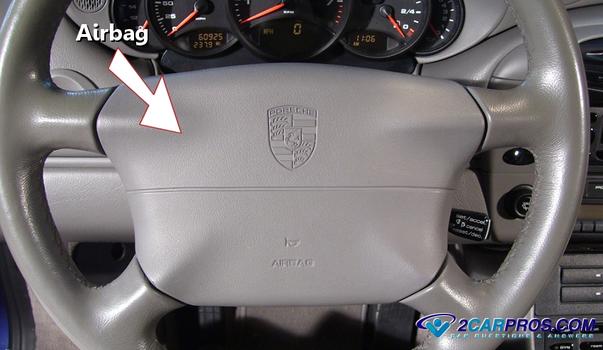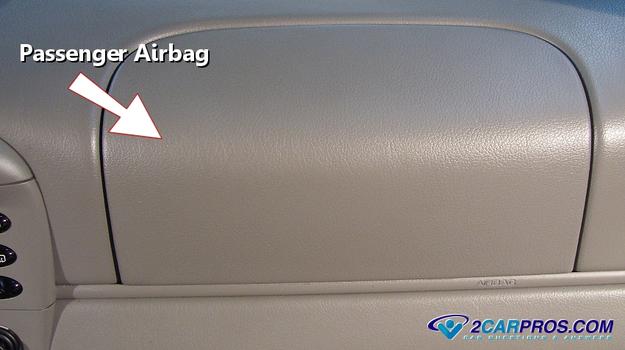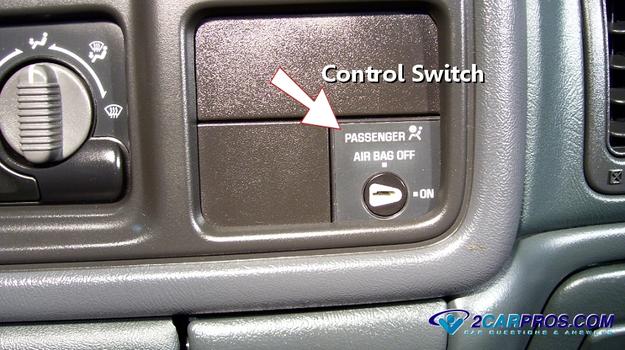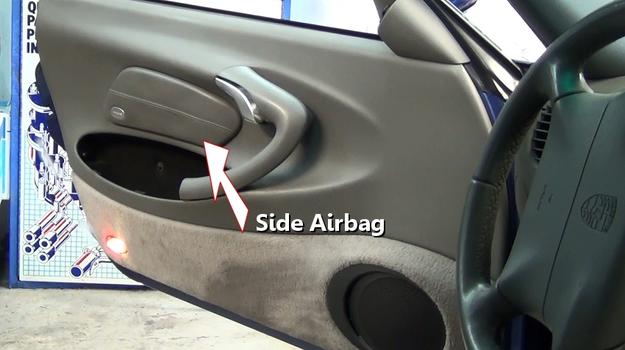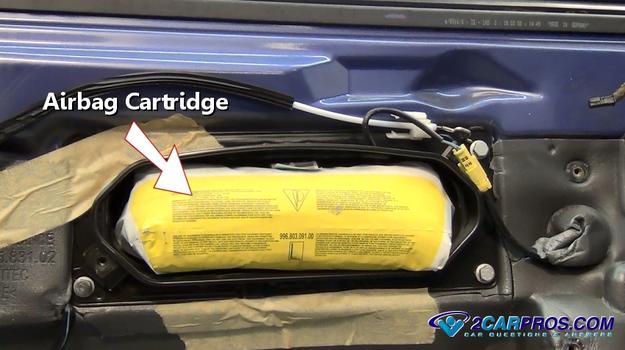An automotive airbag safety system is designed to help keep passengers safe in the event of an accident by inflating itself when a car strikes an object at speeds above 8 to 14 MPH. It also automatically deflates at temperatures of above 200°F in case of fire to allow the occupant to exit the vehicle. An airbag inflation module is located at the center of the steering wheel which contains the nylon style airbag and inflation capsule. The steering wheel airbag is contained within a trim cover which is designed with a molded seam which tears open as the airbag deploys.
There are four or more impact sensors around the vehicle which send a signal to the main SRS (safety restraint system) computer in case of an accident. An electrical signal is then sent to discharge rapidly expanding gases through an orifice located at the rear of the airbag which immediately fills to instantly cushion the impact of the head and torso to prevent injury.
The frontal passenger side airbag operates in much of the same manner as the drivers side with the exception of a weight sensor located in the passenger seat which detects the presents of a person or infant sitting in the seat. The technology behind this infant or toddler detection has been advanced throughout the automotive industry with the use of weight sensors informing the system if someone is sitting in the seat weighing 75 pounds or less which automatically disables the passenger side bag.
Even with the technological advancements passengers should set back away from the airbag and not lean forward when they drive or ride to avoid any adverse effects of the airbag deployment in the event of an accident. Some cars and trucks are equipped with a manual control switch that will disable the system for small children and infant seats.
Side door air impact bags were introduced to aid further safety measures which is located inside the seat, door panel or side molding. Some side airbags can be located in along the roofline, back seat or the inboard edge of the door sill. The initial airbag system was enhanced and replaced with the supplemental restraint system or SRS which was introduced in the S-Class Mercedes-Benz in 1980, Porsche was the first to introduce the passenger side airbag.
What Goes Wrong?
If an airbag warning light is on while driving the airbag safety system has been disabled and will not activate in the event of an accident which is dangerous. Your vehicle goes through a diagnostic check when the ignition key is turned on to ensure the system is operational. If the computer detects a problem it will shut down the system while illuminating the airbag warning light. This warning light will illuminate when:
- The fuse is blown
- One of the air bag connectors is still disconnected after a repair
- The airbag safety module has detected a problem
- An airbag has deployed
- A sensor wring is damaged
- Short in the wiring harness
Why Does The Airbag Need to Be Removed?
There are primarily two reasons an airbag needs to be removed or replaced. The first and most obvious is that the car has been in an accident and the airbag has deployed in which case replacement is required because they cannot be reused. The next is a repair that requires the removal of an airbag that needs to be done such as a turn signal switch which is located behind the steering wheel. Other repairs include the removal of a side air bag such as a window regulator replacement job. As you can see by the image below the side airbag stands in the way of the window regulator.
Before You Begin Removing the Airbag
Begin with the vehicle on level ground with the transmission in park, set the emergency brake. Performing a removal and replacement is not too difficult and can be done using everyday tools. This job will take about an hour. Disconnect the battery's negative cable to disable the system for about 5 minuets before work begins and leave it disconnected until the repair job is completed. This will help prevent electrical short circuits and accidentally deploying the unit while the job is being done. Though appearances may vary the process is similar for most vehicles.
Credits
This guide knowledge base was created by the 2CarPros Team, and by Ken Lavacot: Automobile repair shop owner and certified master automobile technician of over 30 years. If you have question or need help please ask one of our experts we are happy to help. Please visit our 2CarPros YouTube Channel.
